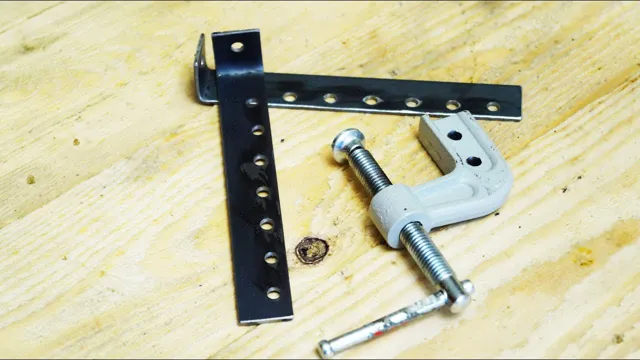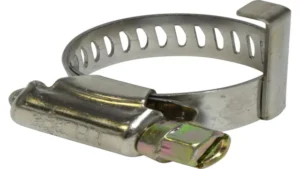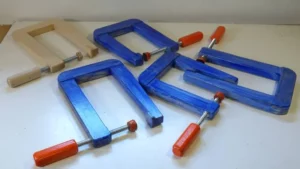Are you tired of feeling like your dirt bike is pulling to one side or struggling to turn smoothly? If so, it might be time to align your triple clamps. Proper alignment of the triple clamps is crucial for optimal alignment of the front end of your dirt bike, which in turn affects the handling and stability of the bike. But don’t worry – aligning your triple clamps can be a simple process with the right tools and a little bit of knowledge.
In this step-by-step guide, we’ll walk you through the process of aligning your triple clamps, ensuring that you get the most out of your dirt bike’s performance. Whether you’re a beginner or a seasoned rider, aligning your triple clamps can make a huge difference in the handling and stability of your dirt bike. So, let’s get started on this simple yet crucial process that can help take your riding experience to the next level.
Introduction
Aligning triple clamps can be a bit daunting for those who have never done it before, but with a little know-how and the right tools, it can be done with ease. First, ensure that the motorcycle is on a level surface and that the front and rear wheels are aligned properly. Then, loosen the bolts that hold the triple clamps in place.
Place a straightedge across the top of the triple clamps and tighten the bolts until the straightedge is flush with the edge of the triple clamps. Make sure that the forks are straight by measuring the distance between the fork tubes and the straightedge on both sides. Adjust as needed by loosening or tightening the bolts on the side that needs to be adjusted.
Once everything is aligned, tighten the bolts to the manufacturer’s specified torque settings. By following these steps, your motorcycle will handle better and be safer to ride.
What Are Triple Clamps?
Triple clamps are an essential component found in most motorcycles and off-road vehicles. They are also known as fork bridges, triple trees, or yokes, and they play a crucial role in maintaining the stability and maneuverability of the vehicle. Triple clamps connect the motorcycle’s frame to the front fork and handlebar, allowing the rider to control the steering of the bike.
They also house the steering stem bearings, which help to ensure smooth handling and prevent any wobble or instability in the front end. In short, triple clamps are critical for safe and comfortable riding, and they are an essential element to consider when customizing or upgrading a motorcycle.

Why Is It Important To Align Them?
Aligning your organization’s goals, objectives, and strategies are a crucial factor in achieving success. It’s like a puzzle, where each piece needs to fit together to create the big picture. In business, having misaligned goals can lead to wasted time, money, and resources.
When your team is not on the same page, valuable opportunities can slip away, or worse, business decisions can lead to failure. Therefore, it is crucial to align your business goals from top to bottom to ensure that everyone is working towards the same direction. By aligning goals, organizations can clarify their vision and mission, prioritize their objectives’ importance and ensure all departments are aware of each other’s strategies, which enhances collaboration and communication.
By doing so, you build a culture of alignment and commitment towards shared goals, creating a more effective organization.
Preparation
Proper alignment of triple clamps plays a crucial role in maintaining your motorcycle’s performance and stability. Before starting the alignment process, it is vital to have the necessary equipment and tools, including a torque wrench, a steering stem socket, and a set of feeler gauges. Begin by loosening the upper and lower clamps and ensure that the forks are straight before tightening the bottom clamp in place.
Then, use the steering stem socket to adjust the top clamp, ensuring that it is even with the bottom clamp. Place the feeler gauges between the bottom of the steering stem and the top of the lower clamp to verify the correct clearance. Finally, torque the bolts to the manufacturer’s recommended specifications.
With the right preparation, patience, and attention to detail, you can quickly align your triple clamps and ensure a smooth and safe ride.
Tools Needed
When it comes to preparation for any project, having the right tools is essential. When it comes to creating content for a blog, there are several tools that can help make the process easier and more efficient. First and foremost, a reliable computer or laptop is a must, along with a good internet connection.
This will ensure that you have access to all necessary information and resources. Additionally, a content management system (CMS) such as WordPress or Squarespace can help streamline the publishing process and make it easier to manage your blog. Depending on the type of content you plan to create, tools such as a camera or graphic design software may also be necessary.
By having all the necessary tools and resources at your disposal, you can ensure that your blog will be a success and that your content will be engaging and effective. So, get ready and start creating!
Safety Precautions
When it comes to workplace safety, preparation is key. Before starting any job, make sure to review the safety procedures and protocols in place. Identify any potential hazards and take necessary precautions to prevent accidents or injuries.
This may involve wearing personal protective equipment (PPE) such as helmets, goggles, or gloves, as well as properly using equipment and tools. It’s also important to ensure that any machinery or vehicles are well-maintained and in good working condition. By preparing ahead of time and following safety guidelines, you can help create a safer work environment for yourself and your colleagues.
Remember, safety should always be a top priority.
Alignment Procedure
Aligning triple clamps is an important maintenance step that helps ensure your motorcycle handles correctly and safely. Before beginning this process, make sure your bike is properly supported and balanced on a stand. To align the triple clamps, loosen all the bolts that hold them to the fork tubes, leaving them hand tight.
Using a straight edge or laser tool, measure the distance between the center of the front wheel axle and the center of the rear axle. Adjust the triple clamps until this distance is equal on both sides. Finally, torque all the bolts to the manufacturer’s specifications.
Keeping your triple clamps aligned will not only improve your ride quality but also help prevent accidents caused by unstable handling.
Step 1: Loosen The Forks
When it comes to aligning your motorcycle’s forks, it’s important to take the right steps to ensure a smooth ride. The first step in this process is to loosen the forks. This allows you to make the necessary adjustments to get your bike running smoothly.
To do this, you’ll want to remove the front wheel, brake calipers, and any other parts that may get in your way. Then, use a wrench to loosen the top and bottom bolts that hold the forks in place. Once they’re loose, gently move the forks back and forth to ensure they’re not binding.
With this step complete, you’re ready to move on to the next step in the process. With careful attention to detail and careful execution of these steps, you’ll be able to get your motorcycle forks aligned and running smoothly in no time. So what are you waiting for? Let’s get started!
Step 2: Align The Lower Triple Clamp
Once you’ve properly aligned the upper triple clamp of your motorcycle, it’s time to move on to the lower triple clamp. This is an important step in ensuring that your bike is safe and handles well on the road. The first thing you want to do is loosen the lower triple clamp bolts and the axle pinch bolts.
Once they are loose, push the forks up until they bottom out against the lower triple clamp. Then, tap the forks with a rubber mallet to make sure they are seated properly. Next, use a measuring tool to ensure that the distance between the center of the steering head and the center of the rear axle is the same on each side.
Adjust the triple clamp as necessary until this distance is equal on both sides. Finally, tighten the triple clamp bolts and axle pinch bolts to the manufacturer’s specifications. With a properly aligned triple clamp, your motorcycle will handle better, and you’ll be able to ride safely and with confidence.
Step 3: Align The Upper Triple Clamp
The next step in aligning your motorcycle’s front end is to adjust the upper triple clamp. This is the part that connects the handlebars to the forks. Begin by loosening the clamp’s bolts, making sure that the handlebars are centered and straight.
You can use a ruler or other straight edge to check if the handlebars are perfectly aligned with the fork tubes. Once you have achieved alignment, carefully tighten the bolts back up. Remember only to use the manufacturer suggested torque settings for the bolts.
A properly aligned upper triple clamp is crucial for the safety and stability of your motorcycle. A misaligned front end can cause handling issues and compromise your ability to control the motorcycle in turns or other maneuvers. By following this simple procedure, you can ensure that your motorcycle is safe to ride and always performs at its best.
Step 4: Tighten The Forks
When it comes to tightening the forks on your bike, proper alignment is crucial. The first step is to remove any shims or spacers that are attached to the forks. Next, you need to loosen the triple clamps and slide the forks upward until they’re flush with the top clamp.
Then, gently slide them back down until they reach the bottom clamp. It’s important to make sure that both forks are aligned properly, as this will impact your bike’s handling and performance. To check the alignment, you can use a specialized tool called a fork alignment tool, or simply measure from the center of each fork leg to the center of the axle.
With a little patience and attention to detail, you can make sure your forks are aligned and ready for your next ride. By following this alignment procedure, you’ll ensure your bike handles smoothly and performs at its best.
Conclusion
In conclusion, aligning triple clamps is a task that requires precision, patience, and a steady hand. It’s not just about making sure your handlebars are straight; it’s about ensuring your bike is safe and responsive on the road or track. Remember, a misaligned triple clamp could lead to serious accidents or costly repairs down the line.
So take the time to get it right, and if all else fails, don’t be afraid to seek out the help of a professional. After all, there’s no shame in asking for a little extra support when it comes to keeping your ride in top shape.”
Test Ride And Final Check
When it comes to test riding and final checks, the alignment procedure is crucial to ensuring a safe and enjoyable ride. Before taking your bike out for a spin, it’s important to check that the wheels, handlebars, and pedals are all properly aligned. Start by checking the wheels for any wobbling or misalignment.
If there are any issues, adjust the spokes accordingly until they’re straight. For the handlebars, make sure that they’re centered and aligned with the front wheel also keep an eye on the stem and make sure it’s not over-tightened. Next, check the pedals to ensure they’re aligned with each other and are at the right level in parallel with the ground.
Riding with improper alignment can cause instability and even injuries, so take the time to check and adjust when necessary before hitting the road.
Maintenance Tips
When it comes to vehicle maintenance, keeping your wheels properly aligned is essential for a smooth and safe ride. The alignment procedure involves adjusting the angles of the wheels so they are perpendicular to the ground and parallel to each other. This is typically done by using specialized equipment to measure and adjust the caster, camber, and toe of the wheels.
Not only does proper alignment improve handling and overall performance, it also helps to extend the life of your tires by reducing uneven wear and tear. Neglecting to maintain proper alignment can result in a host of problems, including decreased fuel efficiency, unstable driving, and even damage to other components of the vehicle such as the suspension system. To keep your vehicle running at its best, consider having your alignment checked and adjusted regularly by a qualified technician.
By doing so, you can ensure a smoother, safer, and more enjoyable driving experience.
FAQs
What are triple clamps in a motorcycle?
Triple clamps, also known as triple trees, are the components that attach the front fork tubes to the motorcycle’s frame.
How important is it to align triple clamps?
Aligning the triple clamps is crucial for proper handling and stability of the motorcycle. Misalignment can lead to vibrations, poor steering, and even accidents.
What are the signs of misaligned triple clamps?
Some signs of misaligned triple clamps include difficulty in steering, a tendency for the bike to lean on one side, abnormal tire wear, and some wobbling at high speeds.
What tools are needed to align the triple clamps?
A torque wrench, a straight-edge, a treaded rod, and a set of allen wrenches are some of the tools that can be used to align the triple clamps.
How often should the triple clamps be inspected and aligned?
It is advised to inspect the triple clamps for misalignment after any accident or impact. Regular inspection and alignment can also be done during a motorcycle’s routine maintenance.
Can misaligned triple clamps be fixed easily?
Yes, misaligned clamps can be fixed easily by loosening the bolts, aligning the clamps, and retightening the bolts to the manufacturer’s specified torque.
What are some common mistakes to avoid while aligning the triple clamps?
Common mistakes to avoid while aligning the triple clamps include over-tightening or under-tightening the bolts, using incorrect tools or torque specifications, and not ensuring the handlebars are in the correct position before alignment.






